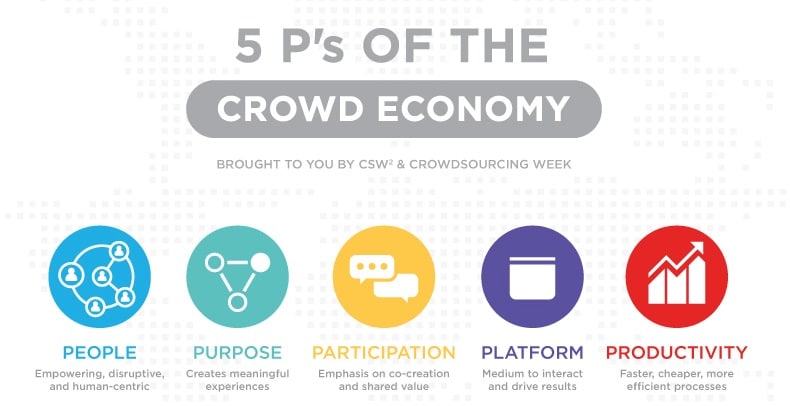 This article by Epi Ludvik is reposted from Virgin Entrepreneur
This article by Epi Ludvik is reposted from Virgin Entrepreneur
Social connections boosted by the web and mobile networks have seeded collaboration and cooperation like never before. Ironically all this technology has, in more instances than not, helped increase human interactions that have gone beyond social media likes and shares.
Likes don’t save lives – this simple but impactful message by UNICEF puts everything in perspective: the social web as we know is great, but what happens after the like, tweet or share? How can we give social connections a little edge to live on longer and be more productive? I believe that we’re just beginning to experience the impact of networked crowds or social productivity layered on top of the Internet as we know it.
We are seeing the maturing of the sharing economy to save resources, open innovation for idea enhancements, P2P funding for startups to scale or crowdsourcing for a user generated video or design. I am making the argument that all these interactions fall under a more powerful human-powered umbrella called the crowd economy.
Let me explain why this is more than semantics. If you follow the emergence of these new solutions that rely on networks and their interdependencies, you will find they thrive on collective action. And this collective action is more than a bunch of people coming together. It is characterized by five fundamentals – people, purpose, platform, participation and productivity. It is not just about sharing or collaboration or crowdsourcing.
The crowd economy is a dynamic ecosystem of productive people who participate through a platform with a purpose to achieve mutually beneficial goals.
So what makes up the crowd economy?
1. The people. The crowd economy is empowering, inclusive, disruptive and human centric.
Human-centric values need to be embedded in applications geared towards the crowd economy where the community is the starting point. The crowd economy or collective action is not about mob behavior but very targeted cooperative solutions that help communities better their lives. People-powered platforms are forging these interconnections between users that are breaking down the barriers between creators, producers and end users. By empowering people, organizations are finding new, previously unimagined pathways and solutions to complex problems as in the case with NASA. Jeniffer Gustetic, Assistant Director of Open Innovation at the US Government Office of Science and Technology attests that highly technical submissions from aerospace enthusiasts and amateurs matched the quality and accuracy of experienced space scientists.
2. The purpose. The crowd economy creates meaningful experiences and shared value.
The crowd economy embodies a culture of shared value creation and social responsibility that distinguishes itself from the traditional one-dimensional thinking and practices of the old economy. People driven initiatives often embody a larger mission to create solutions that work for, and, with all stakeholders. There is more than one channel of communication and the notion that everyone can further his or her purpose is life changing. Patient Innovation is an impressive platform that helps patients drive innovation to find treatment options for their health problems. Patients often develop valuable solutions to help them cope with their disease. In some cases, they saved their own lives.
3. The platform. Crowds need a medium to interact and produce results.
This pillar of the crowd economy has manifested in the form of technology, connectivity and mobile networks. Soon the Internet of Things will contribute to this medium, amplifying human interactions with powerful data. Platforms like Airbnb and Uber have become synonymous with peer marketplaces and have led to new business paradigms taking shape.
4. The participation. Co-creation and participation are emphasized in the crowd economy and communities take an active stake in crafting positive futures.
The power of participation to accelerate innovation is best seen through crowdfunding, that has enabled early ideas get a jumpstart. Crowd verdict is critical to validate business plans and ideas and working with them not only bring financial support but also value product input and iteration. Participation from 60K+ supporters made the Coolest Cooler the most funded project on Kickstarter, exceeding its modest goal of $50,000 to raise over $13 million. Crowdfunded companies are reaching new goals and successes – Jon Medved’s OurCrowd, the leading hybrid venture capital equity crowdfunding platform for accredited investors, announced this week that its portfolio company ReWalk Robotics has completed a successful IPO. When speaking of crowd participation, it is hard not to mention LEGO, a company that turned its fanatic following into an active design community.
5. The productivity. Crowd economy fosters faster, cheaper, better and resource efficient processes.
Digital crowd applications for civic activities, disaster relief and humanitarian work are creating widespread impact. Helping and participation comes naturally to us and the networked web has fitted this mindset with wings. When Malaysian Airlines Flight 370 suddenly disappeared in March this year, a massive digital search ensued that mobilized eight million volunteers, amounting to 20,000 years of volunteer time! Participation in the crowd economy is not always at this scale but imagine the possibilities.
In conclusion how does the ALS Ice Bucket challenge, that was a people’s movement, fit into the crowd economy framework? So there are the people – generally urban populations well connected to social media and technology; the purpose – raise awareness on ALS; The platform – social media and social networks; The participation – social tagging and challenges; and the productivity – Per the BBC, the ALS received $98.2m – compared with $2.7m donated during the same 30 day period last year.
For long, people-centric approaches to problem solving have been associated with a narrow scope that focus on either a marketing gimmick or a cost cutting measure or the worst, a fad. But we know the spectrum of possibilities with the real crowd economy is limitless. Collaborative consumption, sharing economy, crowdsourcing – whatever the name a powerful crowd economy is the foundation that is breeding the mindset to tackle critical challenges we face today.




0 Comments